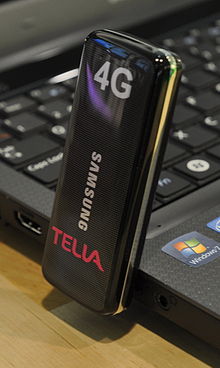LTE Advanced (Long-term-evolution Advanced) is a candidate for IMT-Advanced standard, formally submitted by the 3GPP organization to ITU-T in the fall 2009, and expected to be released in 2012. The target of 3GPP LTE Advanced is to reach and surpass the ITU requirements. LTE Advanced is essentially an enhancement to LTE. It is not a new technology but rather an improvement on the existing LTE network. This upgrade path makes it more cost effective for vendors to offer LTE and then upgrade to LTE Advanced which is similar to the upgrade from WCDMA to HSPA. LTE and LTE Advanced will also make use of additional spectrum and multiplexing to allow it to achieve higher data speeds. Coordinated Multi-point Transmission will also allow more system capacity to help handle the enhanced data speeds. Release 10 of LTE is expected to achieve the LTE Advanced speeds. Release 8 currently supports up to 300 Mbit/s download speeds which is still short of the IMT-Advanced standards.
The physical radio interface was at an early stage named High Speed OFDM Packet Access (HSOPA), now named Evolved UMTS Terrestrial Radio Access (E-UTRA). The first LTE USB dongles do not support any other radio interface.
The world's first publicly available LTE service was opened in the two Scandinavian capitals Stockholm (Ericsson system) and Oslo (a Huawei system) on 14 December 2009, and branded 4G. The user terminals were manufactured by Samsung.[3] Currently, the two publicly available LTE services in the United States are provided by Metro PCS, and Verizon Wireless[citation needed]. AT&T also has an LTE service in the works.
The world's first commercial mobile WiMAX service was opened by KT in Seoul, South Korea on 30 June 2006.
Sprint Nextel has begun using Mobile WiMAX, as of September 29, 2008 branded as a "4G" network even though the current version does not fulfil the IMT Advanced requirements on 4G systems.
SOURCE:WIKIPEDIA
| LTE Advanced | |
|---|---|
| Peak Download | 1 Gbit/s |
| Peak Upload | 500 Mbit/s |
IEEE 802.16m or WirelessMAN-Advanced
The IEEE 802.16m or WirelessMAN-Advanced evolution of 802.16e is under development, with the objective to fulfill the IMT-Advanced criteria of 1 Gbit/s for stationary reception and 100 Mbit/s for mobile reception.4G predecessors and discontinued candidate systems
3GPP Long Term Evolution (LTE)
The pre-4G technology 3GPP Long Term Evolution (LTE) is often branded "4G", but the first LTE release does not fully comply with the IMT-Advanced requirements. LTE has a theoretical net bit rate capacity of up to 100 Mbit/s in the downlink and 50 Mbit/s in the uplink if a 20 MHz channel is used — and more if multiple-input multiple-output (MIMO), i.e. antenna arrays, are used.
The physical radio interface was at an early stage named High Speed OFDM Packet Access (HSOPA), now named Evolved UMTS Terrestrial Radio Access (E-UTRA). The first LTE USB dongles do not support any other radio interface.
The world's first publicly available LTE service was opened in the two Scandinavian capitals Stockholm (Ericsson system) and Oslo (a Huawei system) on 14 December 2009, and branded 4G. The user terminals were manufactured by Samsung.[3] Currently, the two publicly available LTE services in the United States are provided by Metro PCS, and Verizon Wireless[citation needed]. AT&T also has an LTE service in the works.
Mobile WiMAX (IEEE 802.16e)
The Mobile WiMAX (IEEE 802.16e-2005) mobile wireless broadband access (MWBA) standard (also known as WiBro in South Korea) is sometimes branded 4G, and offers peak data rates of 128 Mbit/s downlink and 56 Mbit/s uplink over 20 MHz wide channels.The world's first commercial mobile WiMAX service was opened by KT in Seoul, South Korea on 30 June 2006.
Sprint Nextel has begun using Mobile WiMAX, as of September 29, 2008 branded as a "4G" network even though the current version does not fulfil the IMT Advanced requirements on 4G systems.
SOURCE:WIKIPEDIA

Δεν υπάρχουν σχόλια:
Δημοσίευση σχολίου